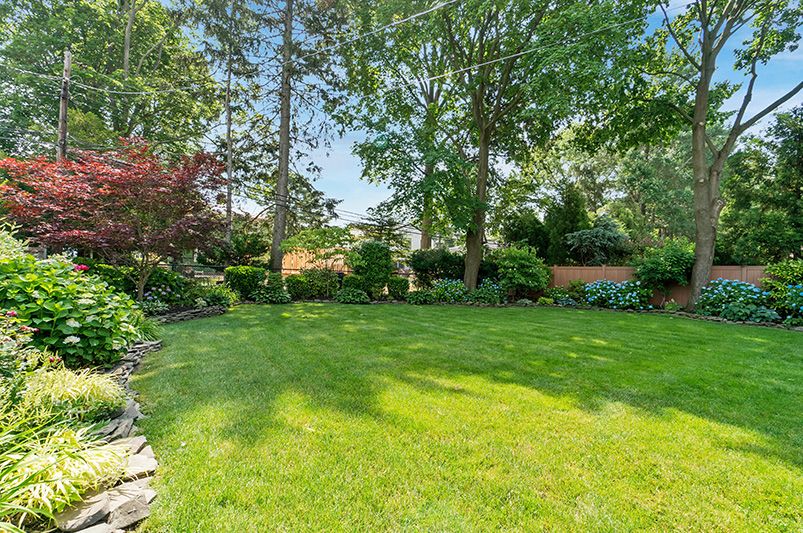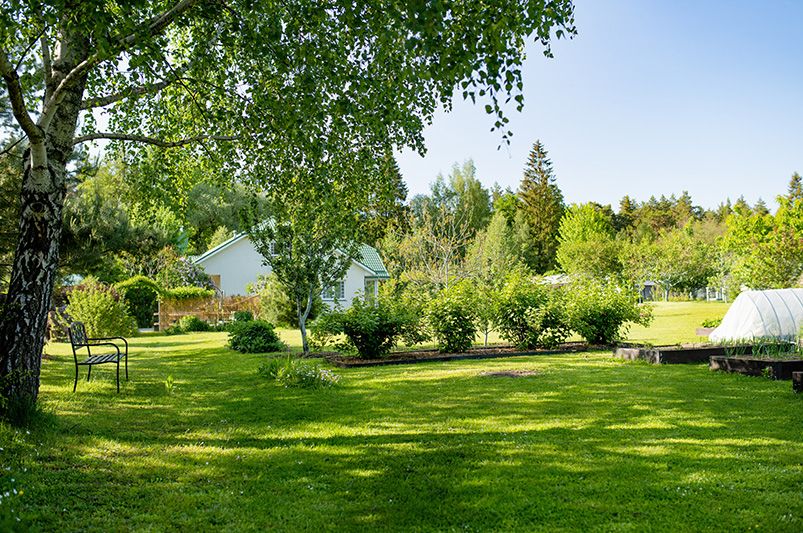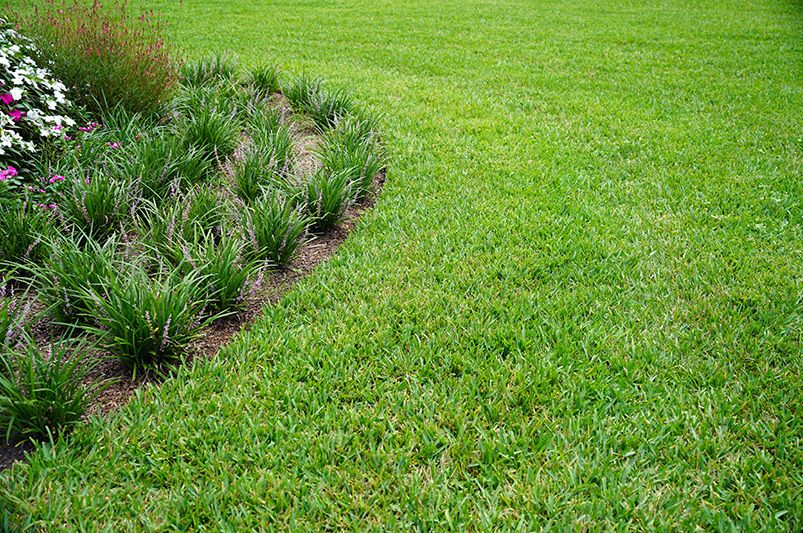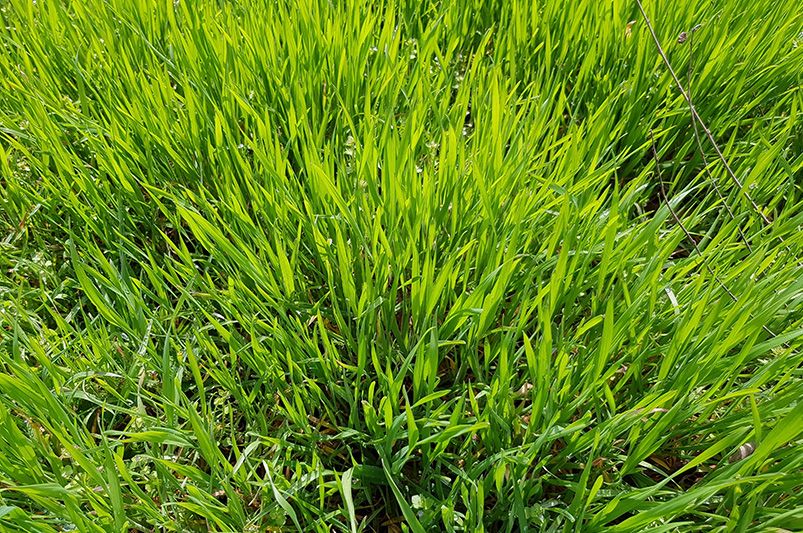
Best Types of Grasses for Planting Near Trees: Expert Tips
Published: 06/09/2024 | Updated: 06/09/2024
Key Highlights
- Planting grass near trees can be challenging due to competition for resources and limited sunlight.
- Selecting the right grass seed, amending the soil, and employing proper watering techniques are crucial for success.
- Regular maintenance, including mulching and appropriate mowing, helps sustain healthy grass growth.
- Understanding the role of light, soil composition, and tree root systems is essential for achieving optimal results.
- With careful planning and execution, you can create a beautiful, thriving lawn even beneath the canopy of trees.
Introduction
Nurturing a green lawn involves helping the grass grow well, even under trees. Seeing healthy grass roots in early spring is great, but shaded spots from tree canopies can make it tough. To have a nice front yard, it’s important to know how trees and grass get along.


Understanding the Challenge of Grass Planting Near Trees
Planting grass near trees has its challenges. You need to think carefully and plan well. Trees are beautiful and offer shade, but they can make it tough for grass to grow.
The canopies of trees block a lot of light from reaching the ground. This is important because plants need sunlight for photosynthesis. When there is less light, grass struggles to grow. Additionally, tree roots take up a lot of water and nutrients from the soil. This means there are fewer resources left for the grass to grow strong.
The Root Competition Factor
Tree roots, especially from older trees, can make it hard to plant grass underneath them. These roots are great at taking water and nutrients from the soil. This makes it difficult for new grass to grow and create its own roots in that tough spot.
The type of grass you pick is very important when planting near trees. Choosing grass that can grow in the shade is a smart choice. These grass types can handle low light and are more likely to grow well. They can deal with less sunlight and moisture better than other kinds of grass.
If grass does not work, consider using ground cover plants. They can be a better choice in areas with a lot of shade and thick tree roots. Plants like ferns, hostas, and creeping jenny do well in low-light spaces and often grow better than grass where conditions are tough.
Limited Sunlight and Its Impact
Sunlight is very important for healthy grass growth. However, the amount of light coming through tree branches can change a lot. This change depends on things like the thickness of the tree leaves, the time of day, and the season. Shady conditions can give some relief from the hot sun, but they also reduce the grass's ability to photosynthesize. This means the grass can't make the energy it needs to grow well.
To choose the best grass for shady areas, it’s important to understand how sunlight affects grass growth. Some grass types grow well in full sun, while others can live and even thrive in shade. When planting near trees, choosing shade-tolerant grass is a smart choice.
Grasses that love shade, like fine fescues or special bluegrass blends, can photosynthesize well even with less light. These types of grass can adapt well, making them great options for growing under the trees where sunlight is limited.

Preparing the Ground for Success
Creating a friendly place for grass to grow starts with getting the ground ready. This is very important when planting near trees, as the soil can have special problems. Before you sow grass seed, you need to fix any issues first. This will help the grass seeds to germinate and grow healthy roots.
Start by cleaning the area where you will plant the grass. Remove any debris, leaves, and extra thatch. This clean-up helps the seeds make good contact with the soil, which aids their growth. You should also test the soil to check its pH and nutrients. Trees, especially evergreens, can make the soil more acidic. You may need to add lime to raise the pH for the grass seed to grow well.
Soil Testing and Amendment
The health of your grass strongly depends on your soil. Before you start planting, doing a soil test is a smart idea. It gives you information about what’s in your soil and how acidic or basic it is. This helps you make changes needed for the best grass growth.
You can find soil testing kits at garden centers. They can tell you about the important nutrients in your soil. After you get the test results, you can add organic matter like compost, manure, or peat moss to improve your soil. This will help the soil's structure, drainage, and nutrient levels.
When adding organic matter, mix it into the top 4-6 inches of soil. This not only helps the soil hold moisture but also gives plant roots the nutrients they need. Good soil makes a strong place for your grass to grow. It helps the grass handle challenges from nearby trees.

Selecting the Right Grass Seed
Choosing the right grass seed is very important when you are planting near trees. Not all grass types grow well in shade. Picking shade grass seed can really help your lawn grow strong in these tricky spots. These special seeds are made to grow in low-light conditions and can compete well with tree roots for water and nutrients.
Keep these main points in mind when choosing your grass seed:
- Shade Tolerance: Pick seed types that are marked as "shade tolerant" or "deep shade."
- Foot Traffic: If people will walk on the grass a lot, choose a seed blend that can handle foot traffic.
- Location and Climate: Find grass seed that matches your area's climate and soil.
When you choose a shade grass seed mix that fits your local climate and the foot traffic level, you give your lawn a better chance to grow well. A good seed blend can help you have a strong and healthy lawn under the tree's shade.
Best Practices for Planting Grass Near Trees
Planting grass near trees takes more care than planting in an open space. To help the grass grow successfully, it’s important to use methods that help the seeds sprout and keep tree roots from competing.
First, make sure the seeds make good contact with the soil when you plant them. Lightly rake the soil and spread the seeds evenly. Water the area gently but well. You want enough moisture for the seeds to grow without moving them around. Adding a light layer of mulch can help by keeping the moisture in and controlling the temperature of the soil.
Mulching Techniques to Retain Moisture
Mulching is very important for your new grass, especially when it's under trees. Putting a layer of mulch down helps keep the soil moist, manage temperature, and stop weeds from growing. These are all key things for a healthy lawn.
When you mulch around new grass near trees, choose organic materials like shredded bark, wood chips, or compost. These will break down slowly and help improve the soil. A thin layer, about 1-2 inches deep, works best. This thickness will help without covering up the grass blades.
Stay away from making a thick layer of mulch. A thick layer can stop air and water from getting to the soil, which can hurt grass growth. Also, keep the mulch a few inches away from the tree trunks to avoid too much moisture that could lead to rot. When used the right way, mulch gives your grass a protective cover, helping to create a healthier lawn under the tough spots near trees.
Watering Strategies for Deep Root Hydration
Watering techniques can have a big impact on how well your lawn grows in the shade of trees. It's important to give enough moisture to the grass roots. However, avoid making the soil too wet, which can lead to fungal issues. Pay attention to how much water the tree needs and change your watering schedule if necessary.
Water deeply but not often. This technique helps the grass roots go down deeper. A strong root system can compete better with tree roots. Instead of watering often with small amounts of water, choose to soak the area deeply so roots reach down for moisture.
Keep an eye on how much moisture is in the soil, especially when it’s hot or dry. Change your watering plan based on the weather and the grass needs. For instance, in the hot summer, you may need to water more often to replace lost moisture due to heat and tree root competition.

Maintenance Tips for Healthy Grass Under Trees
Taking care of a lawn under trees needs a bit of effort and special care. This area has its own challenges. To keep your grass healthy and looking good, you should regularly mow, fertilize, and control pests.
It’s important to change your care methods to fit the needs of grass that grows well in shade. You should also think about how the tree branches affect the area. By giving proper care and paying attention to these needs, you can have a strong lawn, even in the shade of big trees.
Mowing Techniques to Avoid Damage
Keeping the grass at the right height is very important, even under trees. When you mow near them, be careful not to hurt the grass or the tree. Using the right mowing methods helps keep your lawn and trees healthy. This makes your yard look nice and lively.
Make sure to adjust the height of your mower so you don't cut the grass too short. Grass that grows in shady areas tends to do better when it’s a bit taller. This helps them take in sunlight, which they need to grow. Try to cut only a third of the grass height each time you mow. This practice helps reduce stress and supports healthy growth.
Be careful when you mow around the bottom of trees. The lower branches and the exposed tree bark can get damaged by the mower. This could cause injuries that might lead to pests or diseases affecting the tree. To avoid this, think about using a string trimmer or hand shears. These tools allow you to trim the grass near the tree without hurting it.

Fertilization Schedule for Optimal Growth
Fertilizing your lawn provides essential nutrients that support healthy growth, enhance color, and increase its resilience to environmental stressors. However, the fertilization needs of a new lawn under the shade of trees differ from those of an established lawn in an open area. Adjusting the fertilization schedule and choosing the right type of fertilizer is essential for optimal turfgrass health.
New lawns generally require more frequent fertilization during their first year to support root development and encourage establishment. A slow-release fertilizer is often the preferred choice as it delivers nutrients gradually, minimizing the risk of burning the young grass plants.
|
Time of Year |
Type of Fertilizer |
Frequency |
|
Early Spring |
Slow-release, balanced fertilizer |
Every 6-8 weeks |
|
Late Spring |
High-nitrogen fertilizer |
Once |
|
Summer |
Slow-release, low-nitrogen fertilizer |
Once |
|
Fall |
Slow-release, potassium-rich fertilizer |
Once |
Following a fertilization schedule tailored to the specific needs of your turfgrass and the environmental conditions ensures optimal nutrient uptake and promotes a healthy, lush lawn under the canopy of your trees.
Conclusion
In conclusion, planting grass near trees can be tricky. You need to know about challenges like roots taking nutrients and sunlight being limited. To help the grass grow well, start by testing the soil. Choose the right grass seed for your area. Use mulching methods and smart watering practices.
Keep the grass healthy with good mowing and a fertilizing plan. With the right care, you will enjoy rich green grass under your trees. For more tips on landscaping and to help others create nice outdoor spaces, feel free to share this guide on social media.
Frequently Asked Questions
What type of grass seed thrives in shaded areas?
For shady areas, search for "shade grass seed" blends. Fescues and some bluegrass types can grow well in low light conditions. Check how much shade you have. If it's heavy shade, you may need special grass types that are best suited for that condition.
How often should grass near trees be watered?
The watering plan for grass near big trees changes. You need to think about the size and type of tree because they need water too. It’s usually best to water deeply but not too often. This helps the grass grow deep roots. Gardeners should keep an eye on the amount of moisture and change the watering based on the weather and surface roots.
Looking to transform your backyard into a serene oasis?
At ShrubHub, we specialize in creating custom outdoor spaces that fit your lifestyle and preferences. If you’re considering a landscape makeover for your backyard, our expert team is here to help you every step of the way, from design to installation. We offer a wide range of services, including 3D custom landscape designs that bring your vision to life utilizing a variety of high-quality materials to ensure your landscape becomes the oasis of your dreams.


